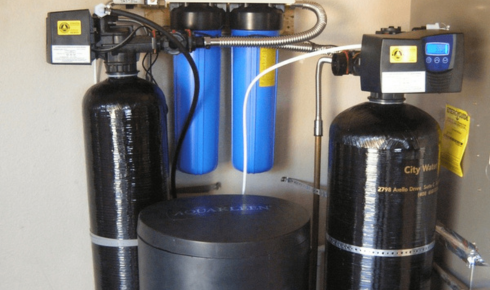Let’s be honest. Most of us don’t give much thought to the water coming out of our taps until something feels…off. Maybe it’s got a weird smell. Maybe your tea suddenly tastes like metal. Or maybe you just find yourself drinking less because something subconsciously tells you it isn’t quite right.
Whatever the case, weird water isn’t just a minor inconvenience—it’s a sign. And it could be pointing to something deeper going on in your pipes, your well, or even nature itself.
When Nature Creeps In: What’s Lurking in Your Water?
One of the most common culprits behind strange-tasting or odd-smelling water? Decaying organic matter. It sounds gross because, well, it kinda is. This can come from leaves, algae, or other plant material that has made its way into your water source—especially if you’re on well water or pulling from a lake or reservoir nearby.
Even if the source is “treated,” that doesn’t always mean these naturally occurring contaminants are fully removed. The breakdown of organic stuff in water can cause earthy or musty odors. Ever taken a sip and thought, “This tastes like a basement”? Yeah—that’s usually why.
The Thing About Tap Water
Municipal tap water goes through several layers of treatment before it lands in your kitchen glass. But despite the filters, chemicals, and regulations, it can still carry sediments, residual chlorine, and other minerals that affect its flavor and smell. Not dangerous in most cases, but still not very drinkable either.
Then there’s the issue of aging infrastructure. Pipes that were laid decades ago. Old plumbing with buildup, rust, or sediment. All of these things can influence what your water tastes and feels like.
If you’ve ever noticed a chalky residue on your sink or spots on your glasses after running the dishwasher, it’s usually a sign of mineral-heavy water. And while not necessarily harmful, it definitely changes your experience with water.
One Filter to Rule Them All?
This is where a whole home filtration system comes into play. Unlike those single-point filters you attach to a faucet or pop into a pitcher, a whole-home system filters every drop of water that enters your house—from the shower to the washing machine to your glass of water.
Imagine stepping into the shower and not being hit by that chlorine smell. Or washing your clothes and actually having them come out cleaner. These systems remove a wide range of contaminants—chlorine, sediments, heavy metals, and even VOCs—before they ever reach your internal pipes.
They’re not just for people with wells or country homes either. City dwellers can benefit too, especially in older neighborhoods where municipal systems may be outdated or overburdened.
When It’s Time to Get Technical
Of course, not all water issues can be solved with one kind of filter. Different problems call for different approaches. And that’s where reverse osmosis shines.
You’ve probably heard the term before. Maybe it was thrown around at a home improvement store or casually dropped in a conversation about “clean eating.” But what is it really?
Reverse osmosis is a process that uses pressure to force water through a semipermeable membrane. That membrane traps nearly everything—salts, heavy metals, bacteria, pesticides. What comes out the other side is some of the cleanest, crispest water you’ll ever taste.
RO systems are often used under the sink for drinking and cooking water, and some more advanced setups can tie into ice makers or coffee machines. It’s a bit more involved than a standard filter but totally worth it if purity is your priority.
It’s Not Just About Taste
Let’s take a step back. It’s easy to focus on how water tastes or smells because, well, those are things we experience directly. But water quality also affects your appliances, your skin, your clothes, and your peace of mind.
Over time, minerals in water can lead to buildup in your pipes. That buildup can clog things, reduce efficiency, or even damage your boiler, dishwasher, or washing machine. Think of it like cholesterol for your plumbing system. Slow, silent, and expensive to fix.
That’s why people often turn to filtration—not just for taste, but for preservation. Cleaner water means longer-lasting appliances and fewer repair bills.
The Hidden Costs of Doing Nothing
It’s easy to ignore water issues until they become impossible to live with. But here’s the thing: that “just a little smell” or “slight aftertaste” is often the canary in the coal mine. What seems minor now could become a costly plumbing issue, an appliance repair, or even a health concern down the road.
And while bottled water might seem like an easy workaround, it’s not a real solution. It’s expensive, environmentally harmful, and still doesn’t address the water you’re showering in, washing dishes with, or using for baby formula.
Plus, let’s face it—lugging giant jugs of water into your house isn’t a lifestyle most people want to commit to forever.
So, What Should You Do?
Start small. Test your water. Seriously, grab a water test kit online or have a professional do it. Know what’s in your water before you decide what kind of filtration you need.
From there, explore your options:
- A whole home system if your water has a wide range of contaminants or smells off in every room.
- A reverse osmosis system if your drinking water tastes weird or has specific pollutants.
- A simple under-sink filter if you just want to improve taste but don’t have major concerns.
Ending on a Clear Note
Water is one of those things we all take for granted—until something changes. It’s the most basic ingredient in nearly everything we do, from cooking and cleaning to staying hydrated and healthy.
But when something feels “off,” don’t shrug it off. That funny taste or slight film or odd smell isn’t just your imagination. It’s your home telling you that it’s time to pay attention.

